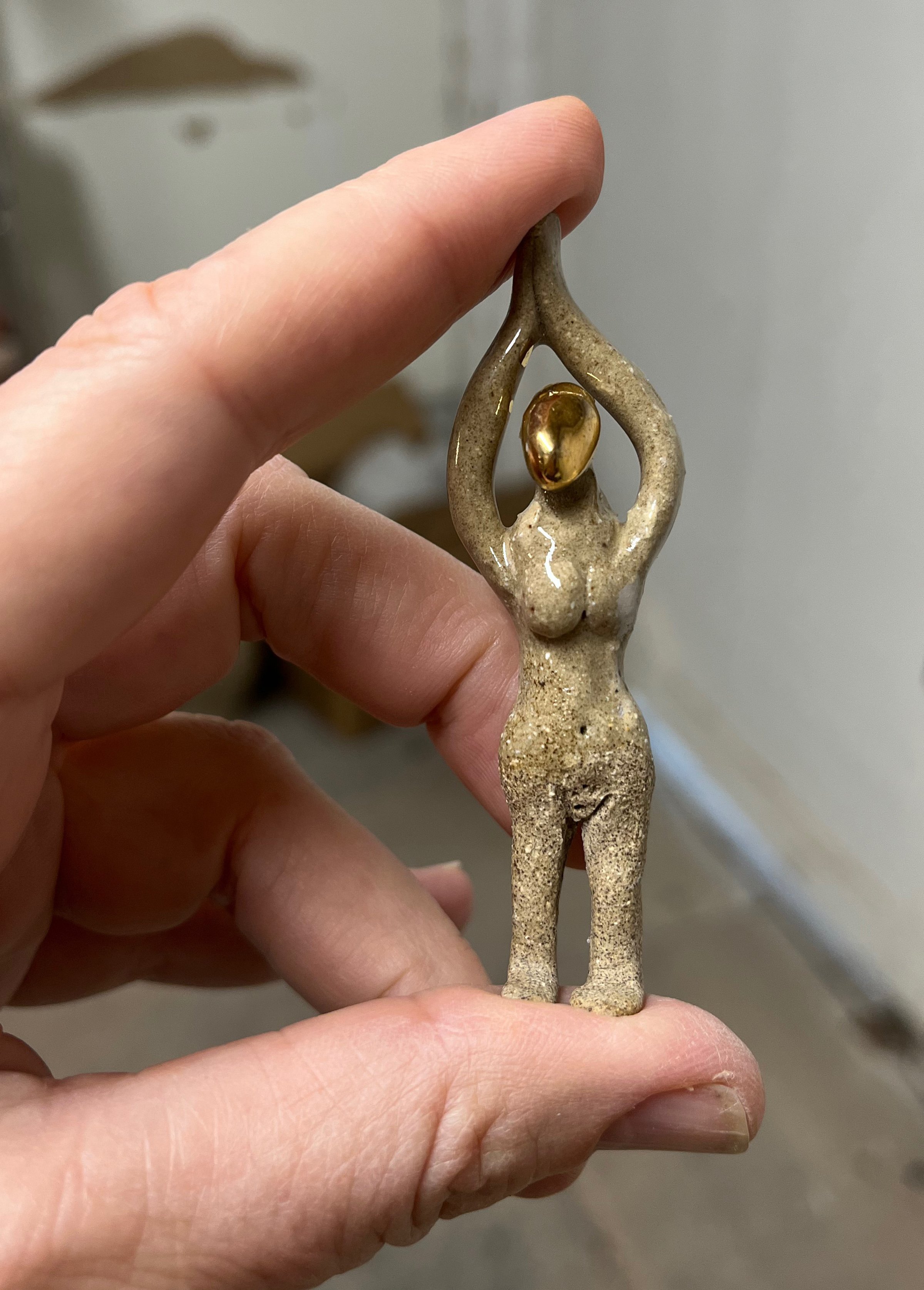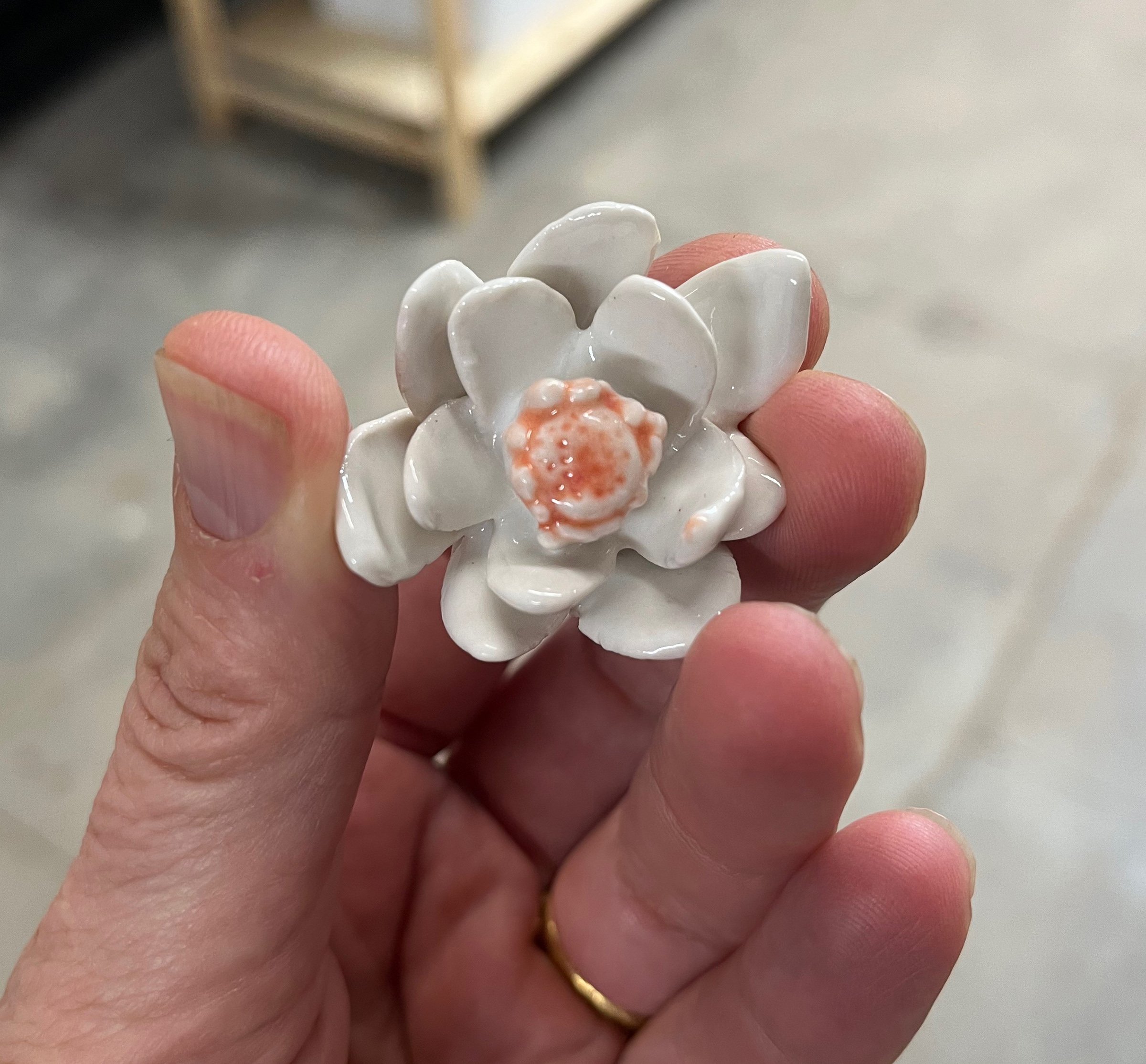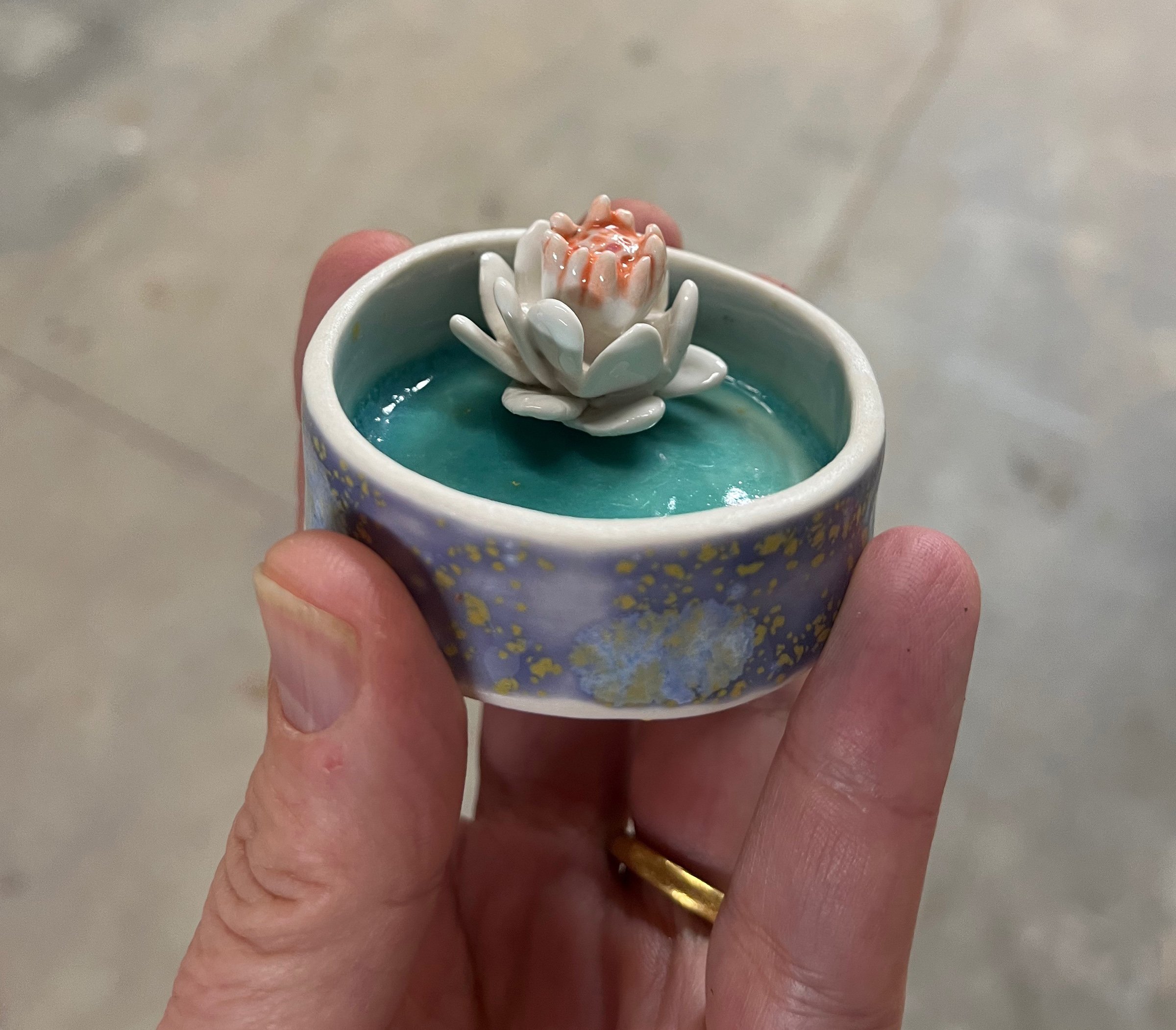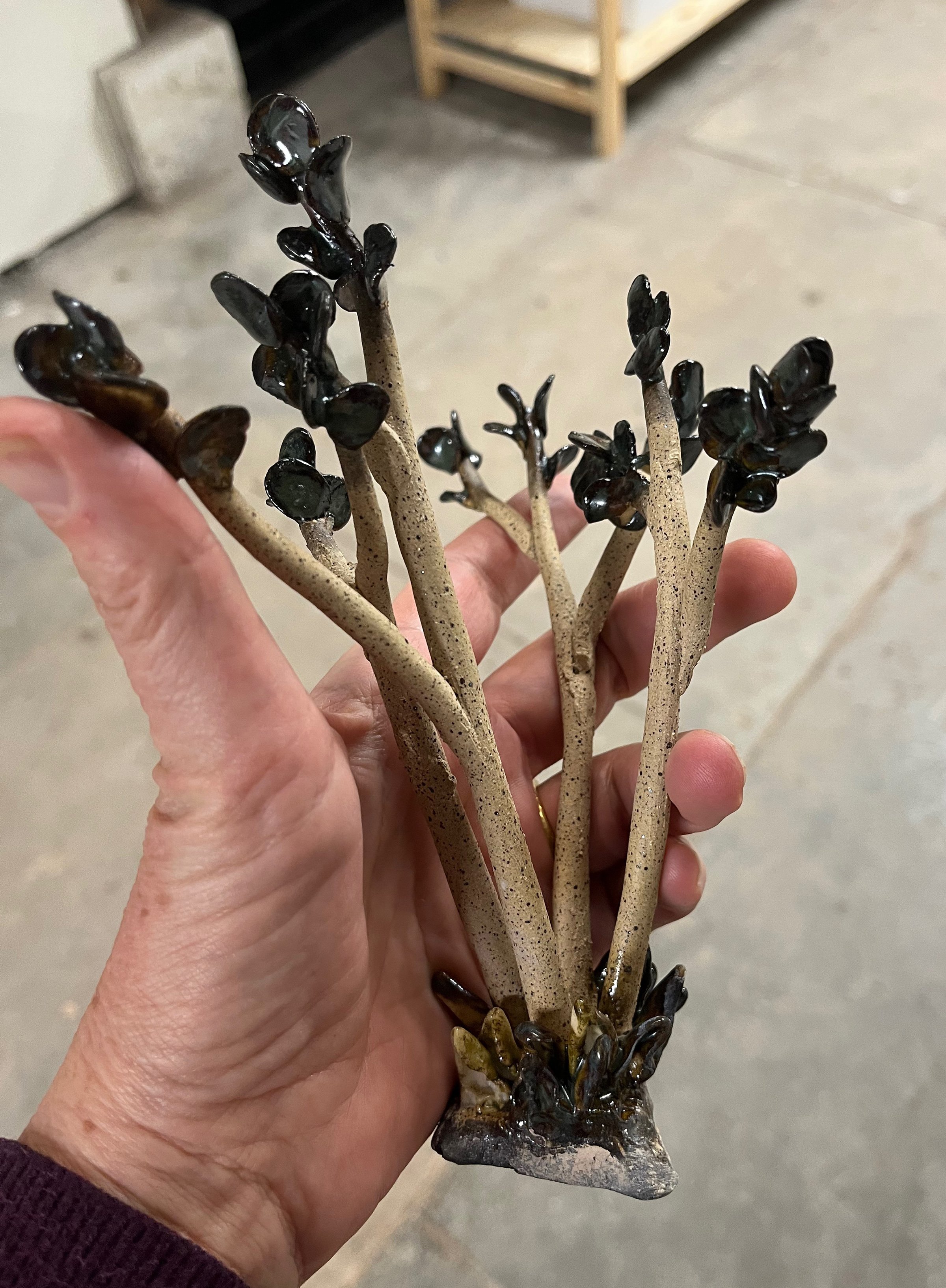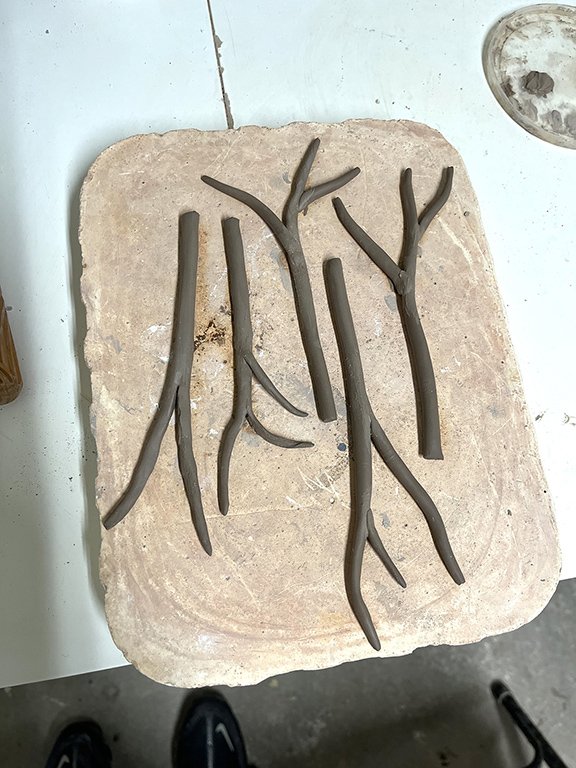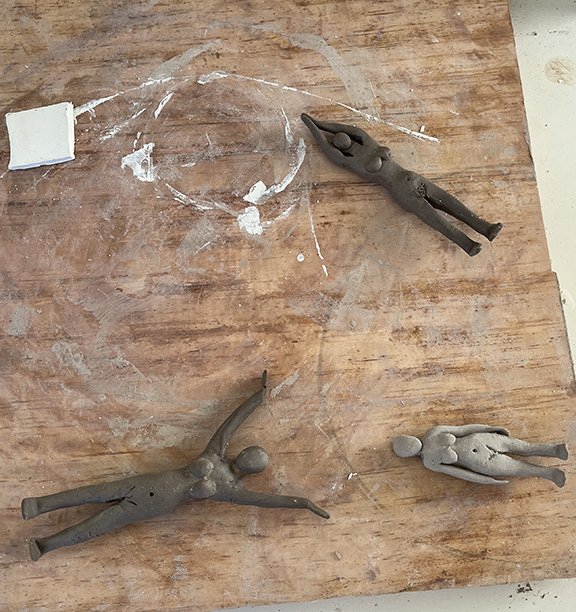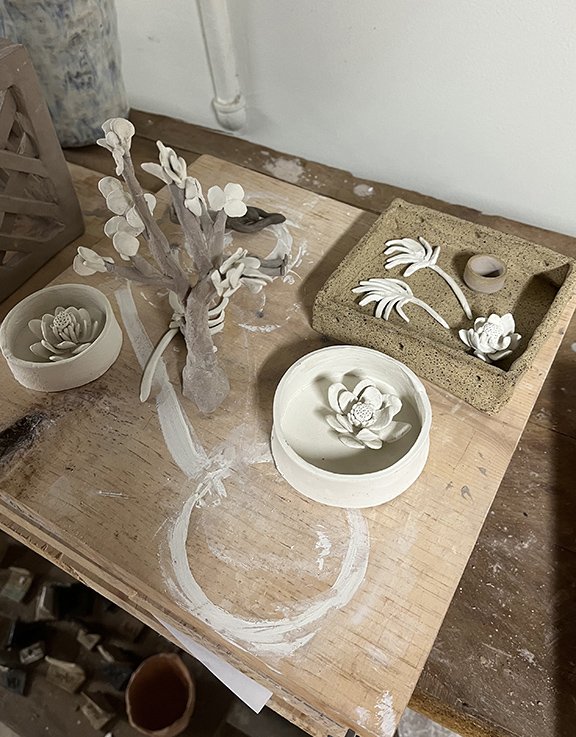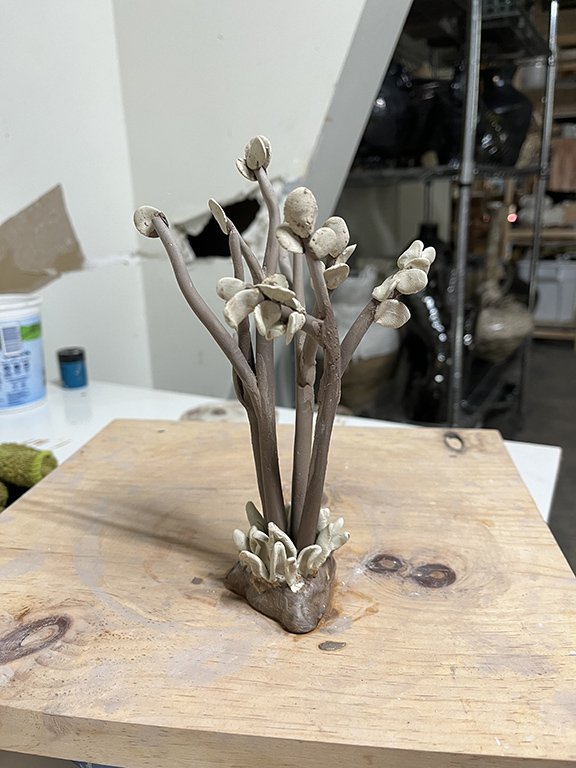Oasis
Victoria Rosenblatt
“In order to make something work, you have to take everything else that’s on your mind and put it someplace else.”
Interview by L. Valena
February 1, 2022
Can you start by describing the prompt that you responded to?
The painting I was sent was of a nude woman in lotus position, sitting on top of a column with trees in the background. Her face was a yellow flower.
What was your first reaction to that?
I looked at it for a while, and realized that it was related to something that had been churning around in the back of my mind for a couple of months. I live in New York and New Orleans -- I spent last summer in Brooklyn and returned to New Orleans in late September. When I got back to my studio in New Orleans, I began preparing for a show of large ceramic pieces that opened in February. It took all of my time until the middle of January. When I got the prompt, I had just finished the last piece for the show. So the other ideas that had been churning around in my mind -- I finally had some time to think about them and maybe actualize them. One of them was a walled garden, and I thought that this piece would work into that idea.
I started by building trellis walls, which were an abject failure. I also made figures, flowers, and the tree. I ended up replacing the walls with that tiered platform. I began to think that maybe my garden wasn't walled -- maybe my garden was really an oasis in the desert. I had a bag of sand I’d picked up on the shore of Lake Pontchartrain. I just kept thinking about what a serene space would look like to me. What that meditative, peaceful space would mean to me. The lotus position became lotus flowers in floating pools, the way they are displayed in the botanic garden in Brooklyn. I made several figures in a variety of asanas. I decided to use the Sun Salutation. And since it was a Sun Salutation, I used gold luster on the head of the figure, which refers back to the yellow flower on the face of the figure in the prompt as well as the reflection on the sun on her face. So that's the germination.
The process was... I don't even know how to describe the process. Ceramics is not very forgiving, and two weeks is a tight deadline for a project, because you have to allow for drying and firing time. In this case, there were three firings, so I only had one week and not two. To compensate, I made a lot of extra pieces. There were four figures and three trees, plus the three pools. There were tiny flower pots with flowers in them. There were two bird baths and a couple of birds. And when it came out of the first firing, some of the pieces were broken, but most of them were intact. One of the trees had fallen over in the kiln and lost all its leaves and a couple of branches. You'll see it in the background, in the sand. I ended up eliminating many of the pieces because it was too crowded. I wanted it to feel lush, but serene at the same time.
So it sounds like you were really picking up on that feeling of peace and being centered. Do you want to say more about what you were pulling from the prompt?
I've spent a lot of time in the yoga studio. That idea of centering, that quiet time, is very important to me. In ceramics, centering is the first step in making anything on a potter's wheel. It cannot be done if you aren't completely concentrating on it. So that was part of where I was coming from. In order to make something work, you have to take everything else that's on your mind and put it someplace else. We live in a very difficult world. Regardless of what side of the political fence you're on, between the pandemic, our dysfunctional political system and the war in Ukraine, the world feels very dangerous. So having that space, that quiet space, has become more important than ever.
I totally agree with that. I personally didn't start meditating until this pandemic started. But I realized one day, within maybe the first week of lockdown, that if I didn't start meditating daily immediately, I was going to go crazy. It has made such a difference in my life.
There has to be some place in your life where you don't think about what's going on around you. I have always made art. I've been making art since before I could walk, and that time spent making art has been the place where I'm most totally focused on myself and my work, and not the noise that's going on around me. And there's plenty of it.
I want to hear more about this gold face, because I'm thinking about the prompt, which had the flower over the face. Were you thinking about that when you decided to do that?
I did. It took a while. I didn't plan this out the way I might have planned a more complicated piece from the beginning. I wanted to see where the process would take me. When I was making the figures, I didn't want to make a flower face. I had addressed the lotus pose and the flower face by moving them into the pools. But the idea that she had a reflection on her face was interesting to me. There is a section in Exodus that describes Moses’ face when he came down from Mount Sinai after speaking with God. His face was so dazzling it terrified the Israelites. I’ve always felt that brilliant light was a reflection of God’s face.
Is this idea something that you've explored in other work?
I've explored biblical themes in other works. I don't usually do a lot of figures in my work. I did in art school, but after that I really stopped concentrating so much on the human figure. The idea of a reflective face, or a face that is the sun, has not come up before.
If you were to show this piece, is this how you would display it, in sand?
It's very small. The platform is 8"x8". The sand is integral to the piece.
Oh yes, you said that in your email, but I didn't really internalize it.
Yes, it's a miniature. The figure is just under two inches, from her feet to the top of her hands.
Do you often work in that size?
Yes. I began working small right before the pandemic started, which is an interesting story. I was introduced to a miniature ceramic wheel. I'm looking at it right now -- the wheel head is about 1.25".
[Laughs] That's amazing.
I had a friend in my in Brooklyn studio who had found this thing online. She brought it in one day, and said, "I think you're really going to like this." And it started a movement in our studio. When we got locked out in March, 2020 because of Covid, the owner of the studio started selling them in a kit with clay and tools for people who were stuck at home.
I've thrown on a wheel before, and I just can't imagine how you would use something at such a tiny scale.
Well, it's different. You center with your fingers, but you don't drop the hole with your fingers, you use a chopstick. You raise the walls with a Q-tip or something like that. I usually use the eraser end of a pencil.
I'm a big fan of tiny pottery.
So am I. I hadn't been, but became one. I started making these tiny scenes. Tiny tea sets on tiny tables. And then tiny food. Pies. S’mores. Ramen bowls with noodles, dumplings and chopsticks. Pizzas. And then a pizza oven for the pizza. It kept me going.
Is there anything that we haven't talked about this process?
They're very delicate. It was more challenging than I thought it would be, but I'm very pleased with the end result. It made me very happy. If I were showing this in a gallery, the sand would definitely be part of it. That broken tree in the back is also part of the piece. It symbolizes the rough world out there.
And it truly is! Do you have any advice for another creative person approaching this project for the first time?
It's a journey. Giving myself a lot of options at the beginning that allowed some flexibility gave me a better result than if I had stuck to my original walled garden concept.
Call Number: Y70VA | Y73VA.roOa
Victoria Rosenblatt is a multi-disciplinary visual artist and designer. Her miniature ceramic scenarios reflect her fascination with the narrative possibilities of quotidian objects and the way scale changes perception. She lives and works in New Orleans, LA and Brooklyn, NY and spends much of her time gazing at trees.



